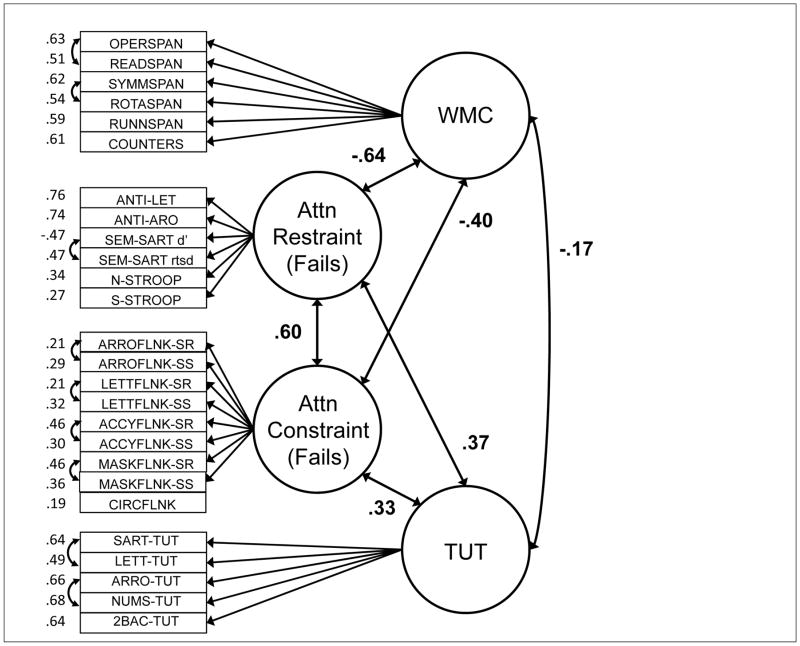Figure 2.
4-factor measurement model of the cognitive variables. All paths are statistically significant at p < .05. The circles represent the latent variables for working memory capacity (WMC), attention restraint failure [Attn Restraint (Fails)], attention constraint failure [Attn Constraint (Fails)], and mind wandering rate (TUTs). The boxes represent the observed variables loaded onto each latent factor. The arrows represent the modeled direction of the pathway between variables (double-headed arrows indicate correlation). Numbers next to boxes indicate task factor loadings, numbers along double-headed arrows indicate correlations between constructs. For the observed variables, OPERSPAN = operation span, READSPAN = reading span, SYMMSPAN = symmetry span, ROTASPAN = rotation span, RUNNSPAN = running span, COUNTERS = updating counters, ANTI-LET = antisaccade with letters, ANTI-ARO = antisaccade with arrows, SEM-SART d′ = d′ score from semantic SART, SEM-SART rtsd = intrasubject standard deviation in RT from semantic SART, N-Stroop = number Stroop, S-Stroop = spatial Stroop, ARROFLNK-SR = Stimulus-response (S-R) conflict effect in arrow flanker, ARROFLNK-SO = Stimulus-stimulus (S-S) conflict effect in arrow flanker, LETTFLNK-SR = S-R conflict effect in letter flanker, LETTFLNK-SO = S-S conflict effect in letter flanker, ACCYFLNK-SR = S-R conflict effect in conditional accuracy flanker, ACCYFLNK-SO = S-S conflict effect in conditional accuracy flanker, MASKFLNK-SR = S-R conflict effect in masked flanker, MASKFLNK-SS = S-S conflict effect in masked flanker, CIRCFLNK = circle flanker, SART-TUT = proportion of TUTs reported in the semantic SART, LETT-TUT = proportion of TUTs reported in letter flanker, ARRO-TUT = proportion of TUTS reported in arrow flanker, NUMS-TUT = proportion of TUTs reported in number Stroop, 2BAC-TUT = proportion of TUTs reported in two-back task.

